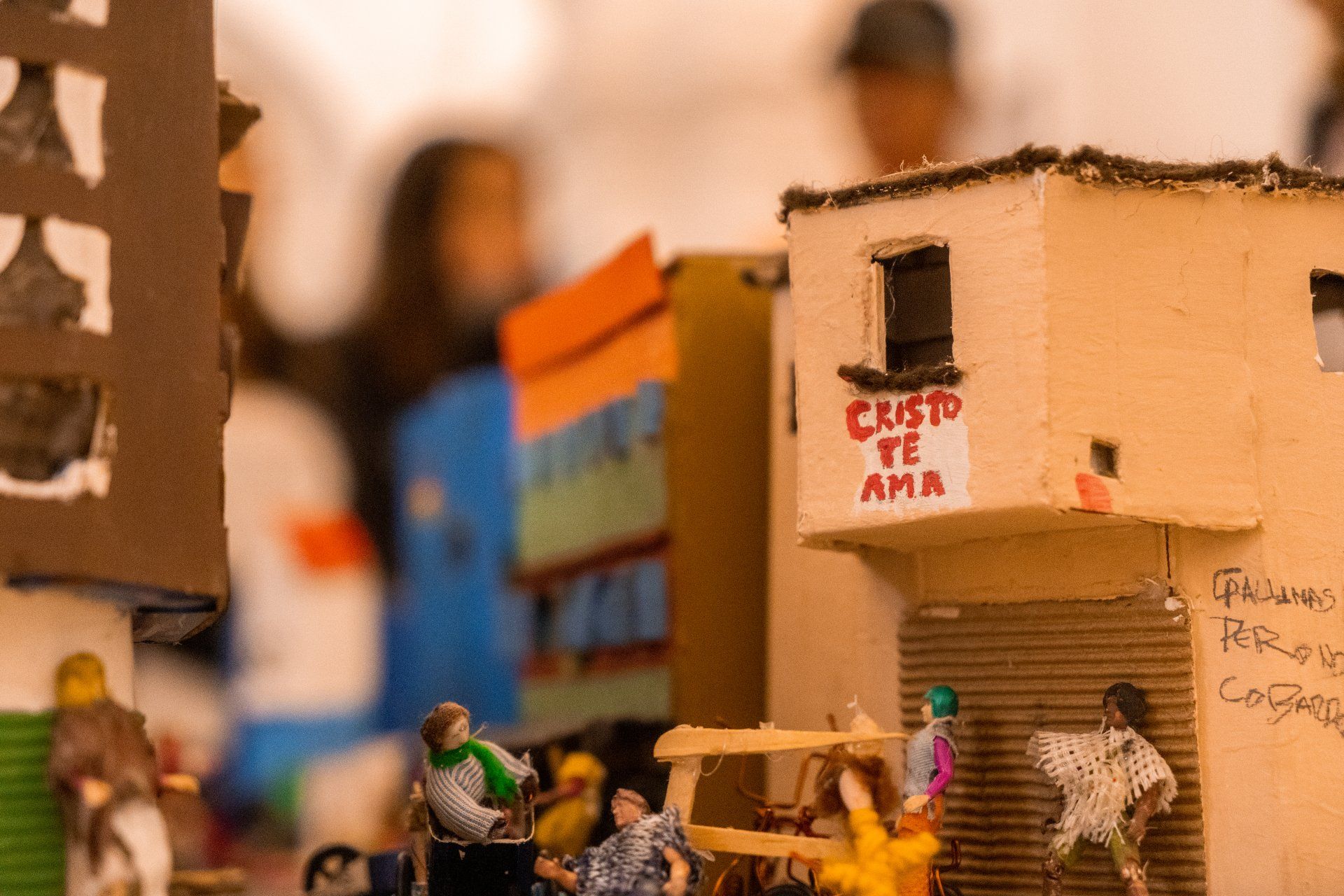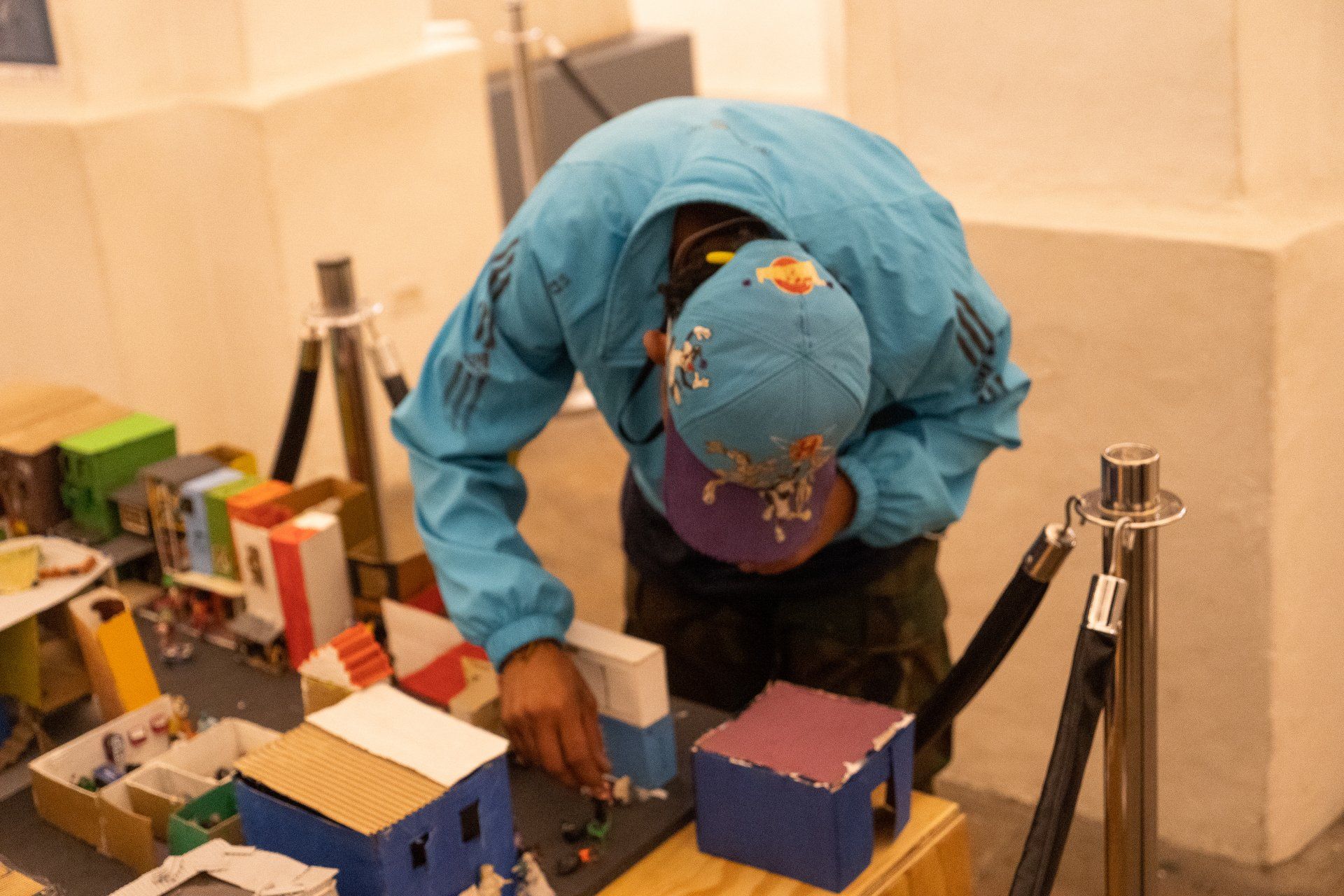La L and El Bronx
One Place, Two Names, Two Realities
La L or El Bronx is a neighbourhood of just 3 streets, which from each of the 3 entrances looks like an L. The neighbourhood was home to families, street-dwellers, and drug-addicts. You could buy any kind of drugs there, sold by different groups of micro-traffickers. The traffickers were protected by the heavily armed Sayayines. The rumor goes that if anyone betrayed them, they would be tortured, killed and chopped up. The homeless would consume basuco, a very cheap extract of cocaine, different, but similar to crack-cocaine. Some women would offer their bodies in return for money or drugs. El Bronx was a place where everything was possible because the government didn’t set a foot in it. Until 2016, when Enrique Peñalosa just started his second term as mayor of Bogotá. On May 28, just after sunrise, two thousand soldiers invaded El Bronx. With the intervention the authorities aimed to eliminate the living hell the neighbourhood was. Barely two years after the intervention, the area was renamed “Distrito Creativo El Bronx” (Creative District El Bronx).
El Bronx: the reality of the media and politics
This description represents the main reason why El Bronx was ended by the administration of former mayor Peñalosa. He said:
“For me, as mayor, the easy thing would have been to do the same that all my predecessors did: to not do anything! We would have continued with the enormous number of children sexually exploited. (...) Let me be clear: El Bronx will never return again” (2016).
Clemencia Ibáñez, who worked with Peñalosa during his first term (1998-2001), explains that El Bronx was filled with child prostitution, child abuse, drug consumption, drug tourism and terrorism.
“There were no families there, and the children were the target of delinquency. There were too many deaths, too many women dying, too many kids in prostitution”.
Therefore, she continues, “they had to intervene, he [Peñalosa] didn’t have a choice, it was too urgent not to attend”, they had to save the children.
La L: the reality of its inhabitants
“La L was our home and El Bronx didn’t exist, except in the stories of the media”.
Jorge started living in La L at the age of three, in 2005, together with his family. For him life in La L was just like that of any other child. He isn’t saying that he wasn’t aware of what was going on in La L. “There were a lot of bad things, a lot of drugs”. He explains that next to him lived street dwellers that rented a room there. “The street dwellers used to gamble with each other. And we, as children, would bet on them, and spend the money on candy”. For Jorge that was a normal life. He doesn’t approve the drugs, but for him the street dwellers and drug addicts were simply his neighbours, with whom he lived together in peace.
Victor used to live in El Bronx since he was a child, but unlike Jorge, he didn’t manage to stay away from the drugs. Victor is a rapper and used to be one of the more famous inhabitants of La L. He had connections with those who ruled the neighbourhood, because he used to organise art festivals every year in La L. During this festival, the inhabitants could perform music, dance, graffiti, etc. I ask him about the violence in the neighbourhood.
“It’s certain that the media exaggerate, right? It’s not a lie that horrible things happened, they killed people, they tortured people. But the media would always exaggerate the situation. For example, for many people, merely entering meant they would kill and rob you. Well, if you were a policeman, they would fuck you. But you could enter. If you were a foreigner, they wouldn’t do anything. They talked about witchcraft. Nothing of that was true. The image of El Bronx was always a bit satanical”.
Eduardo confirms Victor’s story.
“Yes, they would kill you if you stole or didn’t pay for your drugs. But that happens anywhere”. And for Eduardo, that was not how he remembered El Bronx: “We used to have drinks, listen to music, hang out. For me during that time, it was my home, in every sense”.
The Intervention
On May 28, 2016 it all ended. 2.000 policeman entered El Bronx just after dawn, evacuating the entire neighbourhood. For the inhabitants, the intervention was a difficult experience. Read a few of reactions of those who were evicted from their homes:
“The truth is, it was hard. Because like I said, it was our home".
"The whole experience, the change was difficult because in the end it was our home, our house. It was where we lived, where we ate, where we did everything”.
“The good thing is that they ended it. This place was really bad. So much drugs”.
“But it wasn’t well planned. They should have thought more about how to attend the population”.
“The bad thing was they didn’t think about the people that lived there. There were people, families, children, that weren’t on drugs, and also wanted a better future. But the state didn’t think about that. They simply took them away. They evicted the people. Intervened the space. Nothing more”.
“It wasn’t humane. They didn’t even let us grab our personal belongings”.
“The government says, “we ended el Bronx”, but the problem continues. They removed El Bronx, they removed El Cartucho, but they don’t know how to remove the street dwellers. El Bronx is over. But the people dispersed. It was like we were caught in a shooting. [The community] exploded and everyone fled to different directions. Some went to the parks nearby, some to Plaza España, others to the canal of la 6, or the park near Paloquemao”.
“It was like blowing a dandelion. Scattered to all sides. Many people invaded the areas right around El Bronx. But many others went to places very far away. Two months after the eviction, I was invited to speak in Cucutá (568 km from El Bronx, near the Venezuelan border), and even there I met street dwellers from El Bronx”.
Two names, two realities, one place. La L exemplifies the two-sided development of Colombia. The intervention replaced a neighbourhood full of drugs with a creative district; on first sight a very positive development. But the experiences of the inhabitants show that they didn’t enjoy the positive effects of that development. On the contrary, they lost their home, they were displaced (for many for the second time), and no solution was offered to their problems regarding unemployment, homelessness and addiction.
For those solutions to make sense, first their story needs to be told. By them. Because most people in Bogotá agree with the intervention, for they heard the stories about El Bronx – the infamous dark neighbourhood of drugs, crime and torture. A story that legitimises all government intervention, no matter how cruel. It is that story, that one-sided story, that allows for the human right violations against the inhabitants of La L. Lets amplify their words, their story so they can be included in the future of the place that was once their home.









